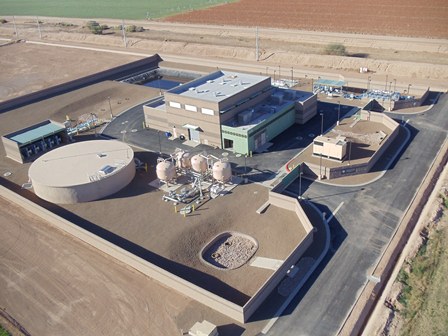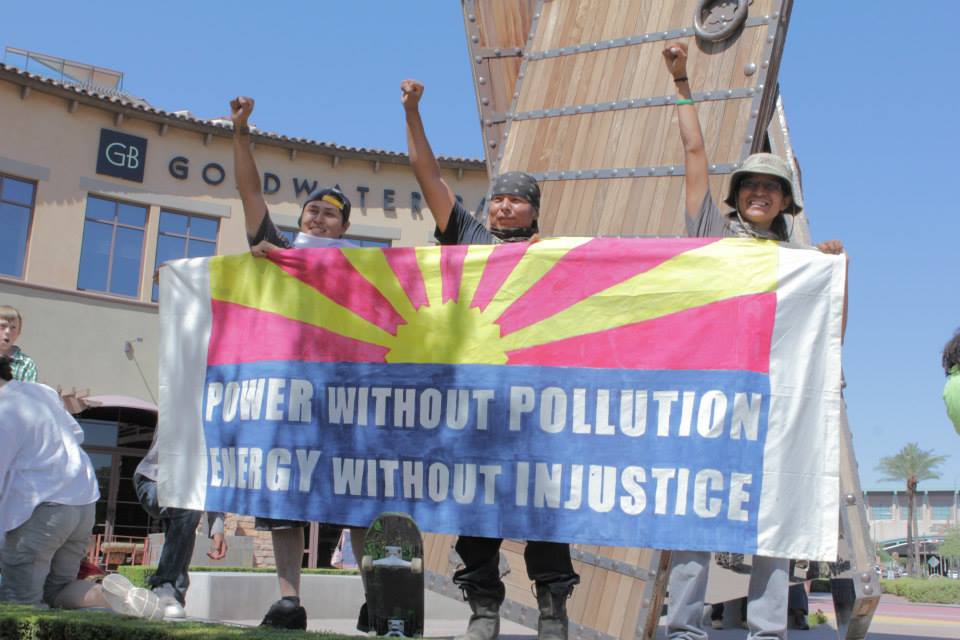Source: Indian Country Today Media Network
On Thursday, the House will vote on a bill that would direct the Secretary of Agriculture to convey more than 2,400 acres of U.S. Forest Service land in southeast Arizona to the Resolution Cooper Mining Co. Enactment of the bill would allow Resolution Cooper, dually owed by Rio Tinto Mining and BHP Billiton, to operate a large-scale cooper mine on Oak Flat disrupting sacred tribal grounds.
If passed, this bill referred to as the Southeast Arizona Land Exchange Act, could potentially destroy sacred tribal places of worship by allowing the foreign mining giants to extract one cubic mile of ore from beneath the surface of the earth. The mining companies would extract the ore through an ecologically destructive process called block cave mining.
In 2011, ICTMN reported that Resolution Copper would use controversial block-cave method, in which explosives are set off below the ore body, creating a space underneath and allowing the ore to collapse from its own weight, after which it’s extracted. Opponents fear the method could damage Native American sacred lands, among them the historical Apache Leap, where tribal warriors leaped to their deaths rather than surrender to Arizona soldiers, according to historical accounts like this one.
In a press release, Rep. Gwen Moore (D-WI) urged colleagues to vote “no” on the bill and said that Oak Flat has been a place where Native Americans have prayed, gathered medical herbs and plants, healed in holy perennial springs, and performed religious ceremonies for decades.
“The protection of places of worship is a fight for which we should all be united,” Moore wrote in a press release to her colleagues. “We must stand together to protect places of worship, including tribal sacred sites because these sites are part of the rich heritage and culture of our country and the essence of our moral identies.” She said the bills passage would jeopardize the cultural history of other sacred sites by setting a precedent with regard to federal protection of tribal sites.
The bill was introduced by Rep. Paul Gosar (R-AZ) in February. Last month, Gosar invited the public to a town hall meeting to gage support of his efforts to bring thousands of jobs to Arizona’s Copper Corridor. He said this goal could be achieved if 678 is passed. “Getting this critical jobs bill across the finish line requires Arizonans to rise up and let their voices be heard. Nearly 4,000 jobs and billions of dollars in economic activity are at stake.”
The withdrawal of Resolution Cooper’s controversial block cave mining process is supported by the San Carlos Apache Tribes, local tribes, and some environmentalists.

The project has also been opposed by Arizona Rep. Raúl M. Grijalva (D-AZ) whowrote about his oppositionto the bill saying that he was not opposed to mining, in principle, but said that they should not come at the expense of Native American rights.
ICTMN also reported that the bill would give around 2,400 acres of public land in southeastern Arizona to Resolution Cooper Co. in exchange for around 5,000 acres in several parcels around the state. As it stands, the bill has largely remained the same.
The federal government has acknowledged its obligation to protect sacred tribal grounds, but if the land swap bill passes, Moore said, Oak Bluff would be transferred to Resolution Copper for private ownership, and out of the domain of regulation by federal law.
“People who think money is first over water and land, such as some people in Washington, are destroying the earth and that’s where our argument is,” San Carlos Apache Tribe Chairman Wendsler Nosie, told ICTMN in 2010. “That’s wrong. You cannot do that, and that’s why I’m standing up for this.”
Read more at http://indiancountrytodaymedianetwork.com/2013/09/17/sacred-az-site-under-siege-pending-house-vote-151326










